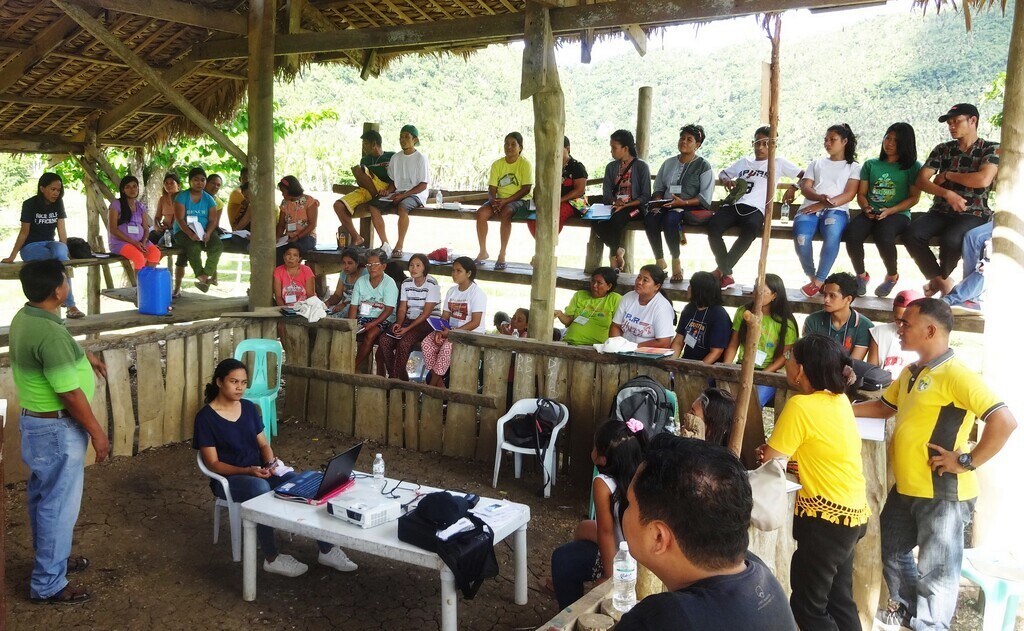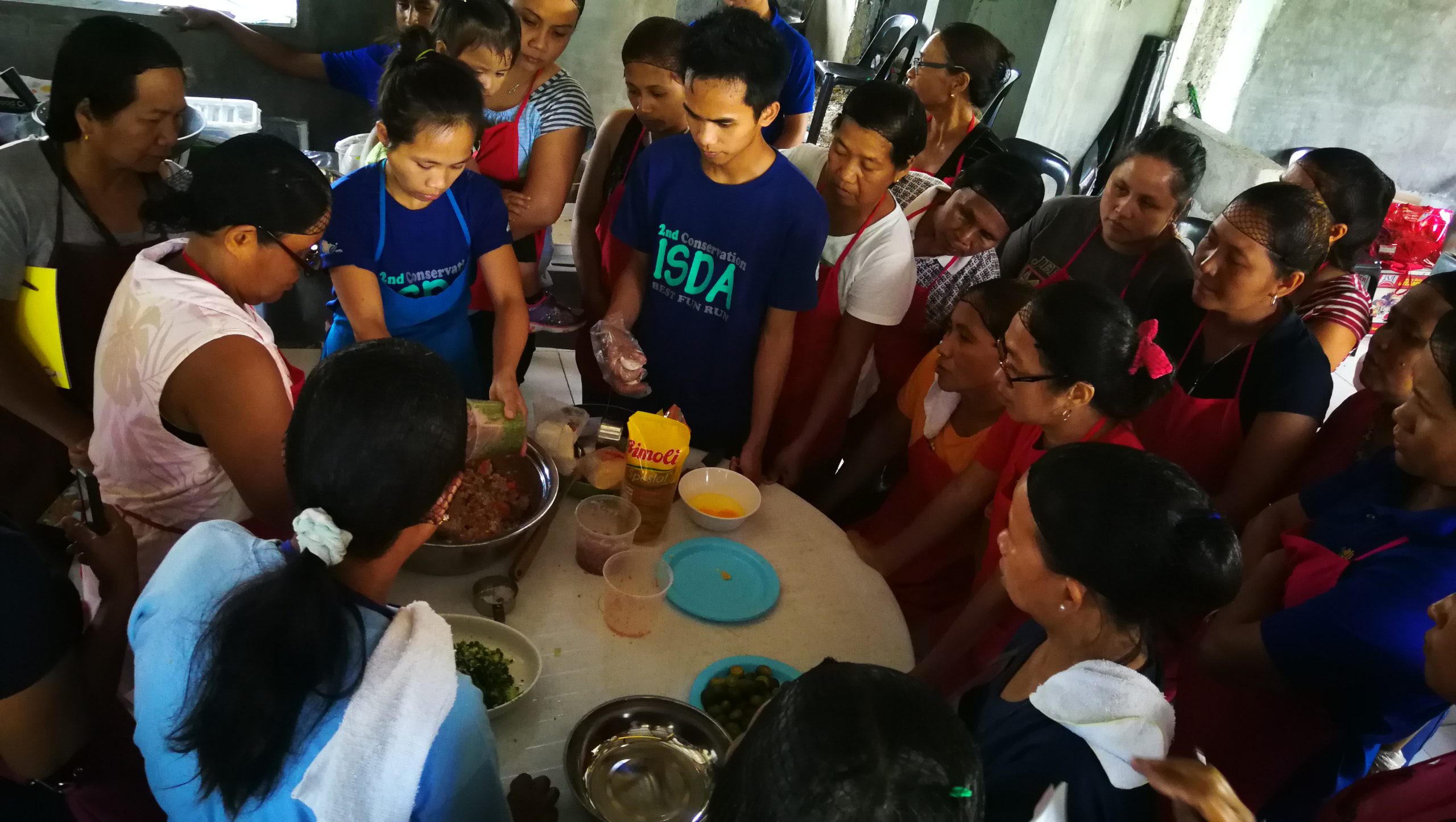by Myer G. Mula, Ph.D. and Ian Kevin M. Sevilla
The initial step in community organizing is the social preparation activities. The series of activities is designed to prepare the affected families to cope with the changes brought about by government programs or development projects and to encourage them to actively participate and prepare their society, community and personal responsibilities in their quest for tenurial security, human development and basic services, employment and livelihood, and other government programs for the urban poor.
While it is true that community organizing is characterized by mobilizing volunteers, staff roles are limited to helping volunteers become effective, to guiding the learning of leaders through the process, and to helping create the mechanism for the group to advocate on their own behalf and always includes confrontations.
Community organizing strategies include meeting with corporate or government decision-makers to hold them accountable for their actions, designing programs for others to implement the necessary needs of the community, and aggressive group action to block negative developments or behaviors. Rural and even urban dwellers are continuously in need of advice and information to address the issues and constraints of their farm-related livelihood system. This explains the requisite of basic principles in doing extension work where this will form part of their future professional responsibility.
Community organizing is the process of building power through involving a citizenry who lives in proximity to each other and comes together into an organization that acts in their self-interest in: identifying problems they share and the solutions to those problems that they desire; identifying the people and structures that can make those solutions possible; enlisting those targets in the effort through negotiation and using confrontation and pressure when needed; and building an institution that is democratically controlled by the community that can develop the capacity to take on further problems and that embodies the will and the power of that citizenry.
The Department of Agriculture through its local program, the Special Area for Agricultural Development (SAAD) instituted in 2017 have one of its components, Social Preparations. The main objective is to empower marginalized farmers and fisherfolks through series of meetings and trainings (including needs assessment) in order to ensure the readiness of SAAD beneficiaries in accepting and managing the project in collaboration with partners (local government units, private sector, and other government agencies and stakeholders) in the 30 poorest of the poor provinces with highest poverty incidence of the country.
The said program intensifies production and livelihood interventions to pro-poor growth and proactive investment in poverty reduction, food security, nutrition, and enterprise. Most have also committed to social development goals, such as equitable development, gender equality, social protection, and peace. Agricultural development is activity-based that encompasses investments in land and water, crops, livestock, forestry, fisheries, natural resource management, commodity trade, and agricultural employment through social analysis.
Social analysis is the practice of systematically examining a social problem, issue, or trend, often with the aim of prompting changes in the situation being analyzed. Social analysis is instrumental in designing and implementing successful pro-poor policy and institutional reforms and poverty-targeted investment programs and projects. It is fundamental for understanding the complexities of social diversity, gender, and the various dimensions of poverty (e.g. low income, lack of assets, vulnerability, exclusion, powerlessness, lack of voice, and an inability to withstand shocks).
With the majority of the country´s poor living and working in rural areas, investment in agriculture and fishery through rural development can significantly contribute to these goals. However, contrary to the general assumption that any growth-oriented investment in the agricultural sector effectively reduces poverty, experience has shown that untargeted investment to increase agricultural production is relatively ineffective in reaching the poor. The principles behind the effective implementation of a program/projects lay in the shoulder of the following:
- Agricultural investment must be designed to be proactive, people-centered and socially inclusive from the earliest stages of the programming and project cycle;
- Social analysis strengthens the capacity of agricultural investment to reduce rural poverty and to create socially inclusive, gender-equitable and sustainable development outcomes;
- An interdisciplinary and holistic approach to social analysis is required to appreciate the interface between social issues and the technical, institutional and economic aspects of project design, and to ensure that overall program objectives are sensitive to relevant aspects of the socio-economic and cultural environment;
- Social analysis is a cross-cutting issue which should penetrate all program activities and not be confined solely to the interests of the sociologist;
- The sociologist reflects the priorities of the intended beneficiaries and others in negotiations with government and donors regarding agricultural investments;
- The process of social analysis contributes to building local ownership and mutual understanding of investment program among the financing agency, government and intended beneficiaries, and enhances the capacity of local actors to implement them; and
- Social analysis is applicable at all stages of the programming and project cycle and for all types of agricultural investments.
For this purpose, SAAD has developed general procedures on how social preparation should evolve:
- Contact building. The SAAD Coordinators – Provincial Coordinator (PC), Area Coordinator (AC), or the BFAR Provincial Fisheries Officer (PFO) – must send communication letters and secure consent or approval from the concerned Local Government Units (LGUs) and communities before any operations will take place. The SAAD staff are to brief them about the SAAD Program, its subprojects, and beneficiary eligibility requirements.
- Information Campaign. The SAAD Coordinators will visit the target municipality(ies) and/or barangay(s) to create a community profile where basic information such as geographical information, population, demographic profile, poverty incidence, existing agricultural activities, and, if any, existing farmer associations. Information sources such as the DA-Registry System for Basic Sectors in Agriculture (DA-RSBSA), Office of the Municipal Agriculturist, Pantawid Pamilyang Pilipino Program (4Ps) of the Department of Social Welfare and Development (DSWD), and, if applicable, the National Commission on Indigenous Peoples (NCIP) database, are also reliable references.
- Identify the beneficiaries. In coordination with local officials, the SAAD Coordinators will hold community meetings to introduce the program and its beneficiary eligibility requirements. Qualified partner-farmers will be identified and listed.
- Identify projects. The SAAD Coordinators will provide the prospective beneficiaries the menu of available projects that range from rice, corn, high-value crops, livestock and poultry, industrial crops (i.e. abaca), and fisheries (aquaculture and capture) from which the beneficiaries will choose, with respect to the SAAD Implementing Guidelines.
- Organization, geotagging, and registration. The SAAD Coordinators will assist the residents in registration to be formally identified as SAAD Program beneficiaries. They will also be assisted for registration in the RSBSA.
- Training of beneficiaries. With the beneficiaries being formally part of the SAAD Program, the SAAD staff will help train beneficiaries in agriculture and fishery production and enterprise development.
With these procedures in place, the program hopes to further strengthen its social preparation practices down to the barangay level and ensure that each beneficiary, whether individual or group, are well-prepared to receive livelihood projects.
For four years since the SAAD Program started its implementation from 2017 to mid-2020, a total of 801 social preparation and 1,857 specialized training activities were performed benefitting 96,663 farmer-beneficiaries and 3,126 associations, granting 886 livelihood projects with 69 enterprises developed.
References:
Albee A and Boyd G. 1997. Doing it Differently – Networks of Community Development Agents. Caledonia Centre for Social Development.
Beckwith D and Lopez C. 1997. Community Organizing: People Power from the Grassroots. Washington, DC: Center for Community Change.
Food and Agriculture Organization. 2011. Social Analysis for Agriculture and Rural Investment Projects – Manager´s Guide. 60 pp.
Mula RP and Mula MG. 2020. Agricultural Extension and Communication: A Theoretical Guide to Social Preparation of the Special Area for Agricultural Development (SAAD) Program. Department of Agriculture. 82 pp.







Comments (0)